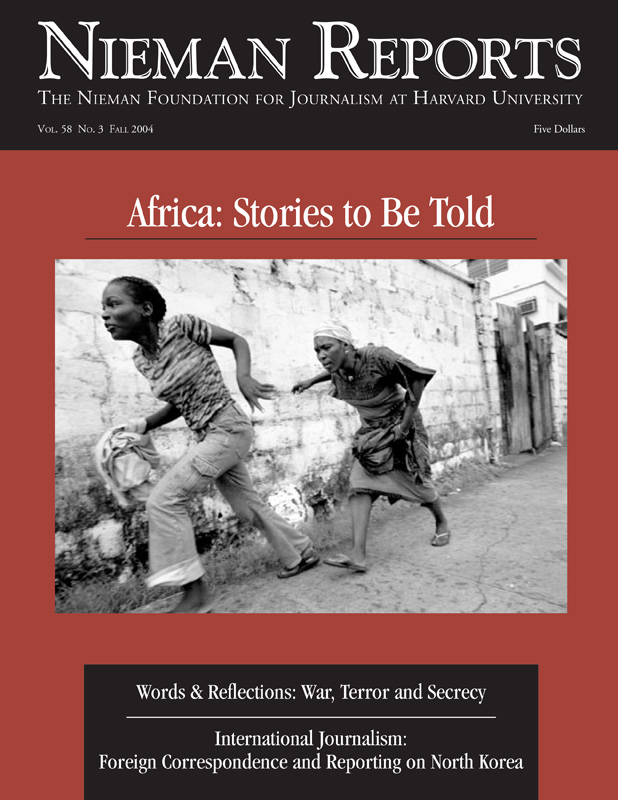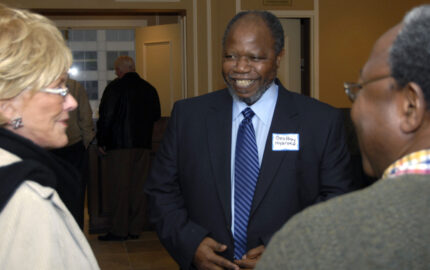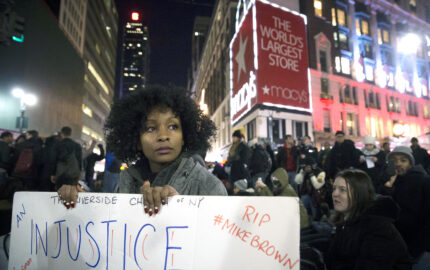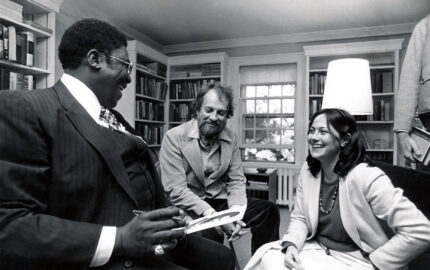An impressive effort is underway in Trenton, New Jersey’s capital, to provide every newborn, infant and toddler with resources to develop healthier lives. By using a multimillion-dollar grant from The Robert Wood Johnson Foundation, Children’s Futures provides parents and children with comprehensive health and social services through a network of new community centers and special programs. It is a possible prototype for efforts elsewhere to nurture children during crucial periods of development—prenatal through the fragile early years.
Local print and broadcast media have made commitments to report on these issues—and these approaches to responding to them—and the Children’s Futures program is enlisting young people to help communicate this information to the members of the community. In doing so, these young people couple community service with career training as print or broadcast journalists, poets, artists, writers or photographers.
In March, about 30 young people from Trenton Central High School and from several youth groups met at a hotel for a daylong seminar that I moderated with journalists, educators and child health specialists. The workshop participants were predominantly African American and Hispanic American. Our message: There are ways for them to explore the possibility of journalism careers by reporting and communicating about these important child health development issues in the Trenton community. And in the process of doing this, they could put themselves in a better position to take advantage of the urgent need of the news media and universities to make newsrooms more racially and ethnically diverse.
As the workshop ended, we invited them to use words, sounds and images to articulate their thoughts about their own young lives—about their relationships and friendships leading to courtship and lifelong commitments, to children and family and parenting.
When a community specialist asked students at the workshop whether they knew of someone who left school because of teenage pregnancy, two-thirds raised their hands. On her workshop application, one teen described her baby sister’s struggle to deal with lead poisoning as her motivation for wanting to be involved. Others discovered personal connections between the program’s themes, their life experiences, and career aspirations.
In his keynote speech, Acel Moore, a 1980 Nieman Fellow who won a Pulitzer Prize and is associate editor of The Philadelphia Inquirer, urged the students to be diligent in gathering news and information, to be skeptical and scrupulously accurate, and to expect stiff competition for jobs. He described an ongoing project he initiated to let young people publish stories written about their communities in special youth pages of the Inquirer.
Other speakers from the Princeton Packet community newspapers, New Jersey Network (NJN) Public Television, and Morris Broadcasting (Radio) Company provided tips on how young people can break into journalism. The New Jersey Press Association staff described some of its college scholarships and special summer minority training programs. Speakers from Rutgers University and Temple University reviewed trends in new media, the Internet, and advanced broadcasting in a digital age. High school teachers described video and photography projects that could connect with career goals. The mayor and school superintendent urged students to get involved in their community.
The time we spent together was equal parts information and inspiration. One teenager who attended the youth workshop wrote to us about what the day’s experience had meant: “I think today made a change in the way I looked at life. I found different perspectives of the media. I would give this summit an A-plus because it allowed teens to voice their own opinions. Thanks.” Others expressed similar kinds of appreciation for giving them this outlet for their thoughts.
What was clear to those at Children’s Futures—and to me—is that what is happening in Trenton to improve children’s health must also be connected to improving the lives and future prospects of those leaving childhood and moving through adolescence. This can be done by getting them involved in learning and using communication skills to connect with efforts like this one. With this in mind, I worked to organize some media training programs with Children’s Futures’ President Rush Russell and Vice President Melinda Green.
So far we’ve held a workshop for print and broadcast journalists to provide tools and knowledge to help improve news coverage of child health and development, and we had this daylong seminar for these young people in Trenton. This fall, we intend to offer a seminar about important policy issues for lawmakers and health experts and will again work with members of the news media to inform them about child health legislation and policy concerns that merit the public’s attention.
As an outgrowth of these gatherings, discussions are underway about the possibility of linking a newly created citizen-run, educational foundation for the Trenton schools with the student media interests. NJN is exploring possible joint television grant applications with Children’s Futures, and the high school’s media studies program might find ways for the students to do projects about child health. The School of Communication, Information and Library Studies at Rutgers University and the New Jersey Press Association—which are partners in the project’s media initiatives—are also looking at ways to work with the young people.
What makes us hopeful about this connection is what we heard when one of them asked us about next steps and then supplied an answer. Perhaps, this student suggested, they could all “shoot for the moon and land among the stars.”
Jerome Aumente, a 1968 Nieman Fellow, is distinguished professor emeritus at Rutgers University’s School of Communication, Information and Library Studies. His projects include training of Arab journalists, programs in Macedonia and Russia in journalism education, and a book on the history of newspapers in New Jersey.



